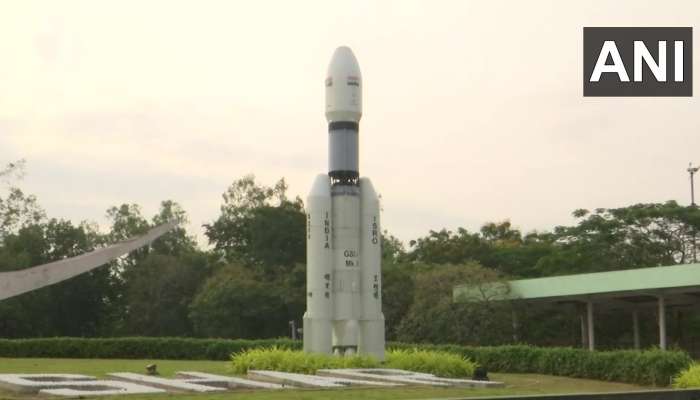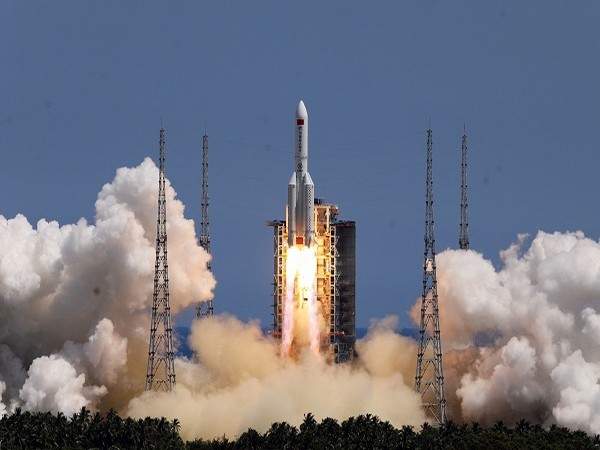

New Delhi: In the early hours of April 2nd in Karnataka, an Indian Air Force Chinook helicopter took off on a mission that has never been attempted. The chopper was carrying India's first RLV, short for Reusable Launch Vehicle to conduct a precise, high-speed unmanned landing.
The Chinook flew to an altitude of 4.5 Kilometres, shattering records for carrying a winged body to such a height. By 7:40 AM, Indian Space Research Organisation (ISRO) and other Indian tech agencies achieved a huge milestone for India's space sector, when the RLV touched down completing all its parameters. With its low cost, sustainable space exploration will be possible--Space X now has a rival. Rewind back to 2014, when the New York Times was forced to apologise for a racist cartoon it published mocking India's Mars orbit mission, 'Mangalyaan', believing that the space club belonged to an elite group which India still had to work to get into. Fast forward to 20--times have changed and the Western press has been proved wrong--yet again.
With the tireless efforts of the ISRO and other Indian agencies that have made a mark, India has fine-tuned its space missions. The country has enhanced the payload capacity of its rockets and has efficiently developed a space program that has outperformed its rivals in terms of tech and competence and has compelled space players the world over to look to India for assistance.
This is yet another example of never underestimating Indian scientists or the new political dispensation at the Centre, which has the resolve and ability to get things done, come what may. The Indian space story began in a little-known fishing hamlet, Thumba in India's southern state of Kerala in the 1960s.
From space launches and operations to inventing technologies to developing commercial satellite launch facilities, the velocity of the Indian space journey has been exponential and second to none.
The Indian Space Program has developed powerful and comprehensive Standard Operating Procedures from launch to landing.
India's space exploration agency ISRO, which dominates the Indian space industry, has led successful milestones for the country and other countries by launching its satellites.
Recently, ISRO's Launch Vehicle Mark III successfully placed 36 satellites of OneWeb, an Indian-owned UK-based company, completing the first generation Low Earth Orbit constellation. S. Somanath, the Chief of the Indian Space Research Organisation said on the launch of PSLV C55 "Today, after this launch, we are preparing to commence the launch campaign of PSLV-C55. This launch is for NSIL & to be launched most probably by the end of March. So the launch campaign will commence today by placing the rocket at the launch pedestal in a new facility".
More recently, ISRO's Reusable Launch Vehicle (RLV) successfully landed, bringing India closer to the dream of its own space plane and sustainable space exploration.
The technique adopted to launch the vehicle was "first in the world". a winged body was carried by helicopter to an altitude of 4.5 km and released for an autonomous landing on the runway.
ISRO successfully demonstrated its innovative and cost-effective technologies which have made it part of an elite space club. India, with the support of ISRO, has emerged as a leader in third-party launch services.
India has earned a massive revenue of USD 279 million till now by launching satellites for 34 countries by the ISRO. India's space industry's role has been instrumental in developing several application areas including weather forecasting, navigation, oceanographic studies, disaster management and agriculture. Experts say that this Indian step will soon prove to be a game changer.
The opening of the space economy to private participation in all phases of activities has ushered in an era of growth, innovation and accelerated investment in the sector. With this reform, the government has enabled Non-Government Entities (NGEs) to run independent space activities, opened up ISRO's infrastructure and facilities for private companies and inspired young talent to come up with innovations.
Even Prime Minister Narendra Modi during one of his conferences with ISRO officials said that "Our reform approaches are based on four pillars. First, the private sector should have the freedom to innovate, second, is the role as an enabler, third preparing youth for the future, fourth is treating space as a resource for progress".
In line with India's self-reliant initiative, India will be soon launching its first ever Aatmanirbhar human flight "Gaganyaan". The objective of the project is to take a three-man crew into orbit for 5 to 7 days and bring them back to Earth safely.
India allocated $137Bn to the Department of Space from 2022 to 2023 for the smooth running of all its missions.
As per a report by the Indian Space Association (ISA) and Ernst & Young(EY), the satellite manufacturing sector is expected to grow from $2.1 billion in 2020 to $3.2 billion in 2025, while launch services will grow from $567.4 million in 2020 to $1 billion in 2025.
For the broader interest of people all over the world, India has forged space project collaborations with the United Nations, and BRICS nations as well as with Israel, NASA and the European Space.
India's breakthrough technological work has resulted in success for India's space sector. Government initiatives and reforms are on track to be game changers for India's space sector, further expediting the industry's growth.
India created history by becoming the first country to enter the orbit of the Red Planet in its first attempt. The pioneering mission, Mangalyaan was the most economical mission ever to Mars. Its budget was about $75 million, which cost only 11% of NASA's Mars Atmosphere and Volatile Evolution Mission (MAVEN).
The Indian space spirit is determined and limitless. Experts say the day is not far when India's lunar exploration mission will be a success.